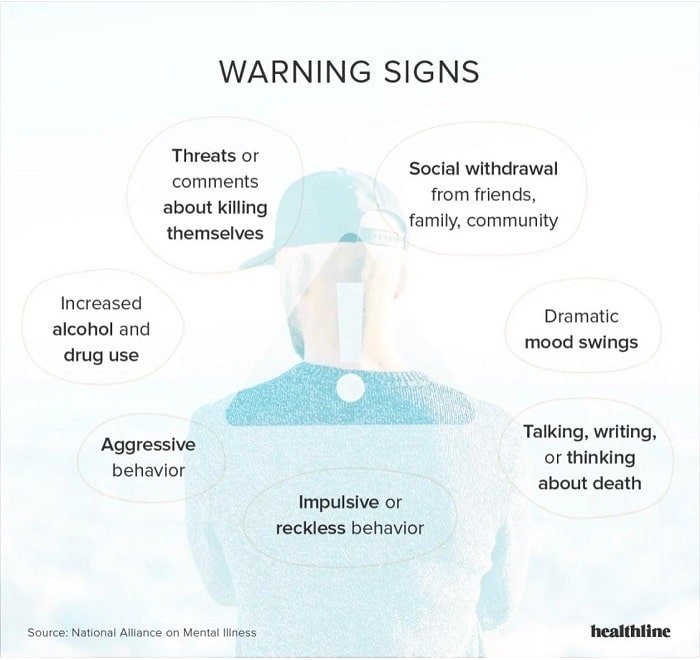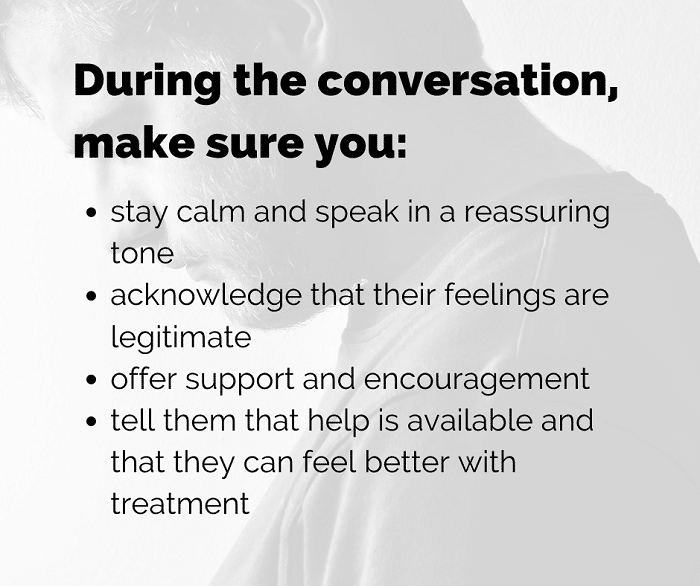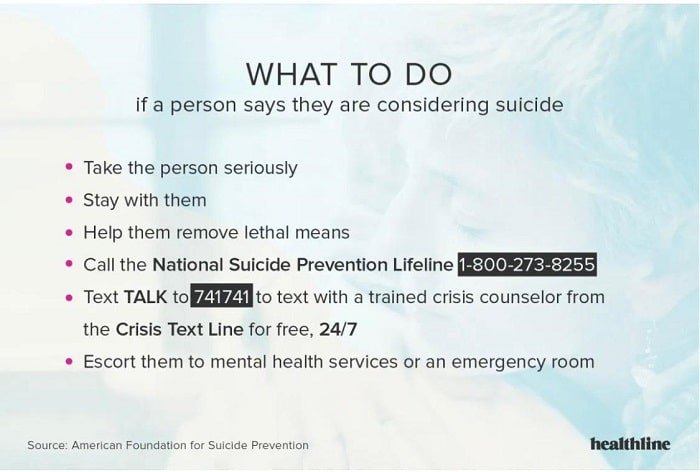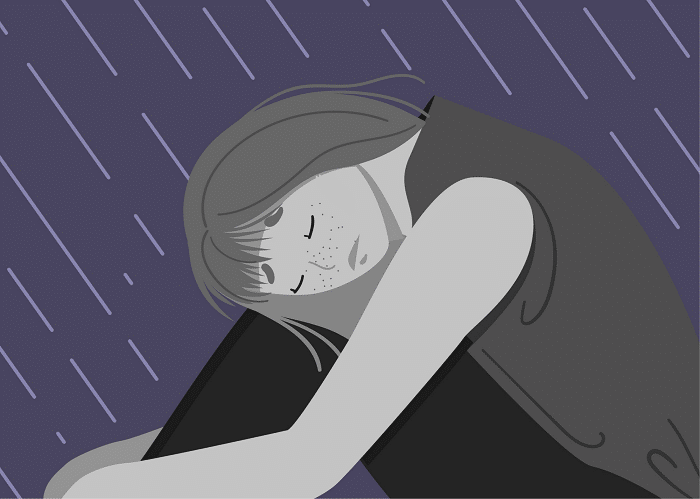Did you know that every year, nearly 800,000 people die by suicide? That’s roughly one death every 40 seconds. It’s a startling number, and sadly, 90% of those lost will grapple with mental health conditions.
It’s National Suicide Prevention Awareness Month, and we’re on a mission to spread knowledge to save lives. Last week, we took a close look at the risk factors for suicide. Today, we’re going to build off that info, explore immediate warning signs, then equip you with the tools to help someone struggling.
To start the journey, take a second to watch this brief video released shortly after actor Robin Williams’s death.
Robin fit the bill for many of the suicide risk factors we examined, including depression, bipolar disorder, a chronic health condition, and a history of substance abuse.
Now, let’s take a deep dive into warning signs and how you can intervene.

Warning signs that someone may attempt suicide
Truthfully, you can’t always see how people are feeling on the inside, which can make it hard to identify when someone is struggling. However, there are often outward warning signs when people are grappling with thoughts of suicide.
- talking about feeling hopeless, trapped, or alone
- saying they have no reason to go on living
- making a will or giving away personal possessions
- searching for a means of doing personal harm, such as buying a gun
- sleeping too much or too little
- eating too little or overeating, resulting in significant weight gain or loss
- engaging in reckless behaviors, including excessive alcohol or drug consumption
- avoiding social interactions with others
- expressing rage or intentions to seek revenge
- showing signs of extreme anxiousness or agitation
- having dramatic mood swings
- talking about suicide as a way out
If you suspect that someone may be considering suicide, talk to them about your concerns. You can begin the conversation by asking questions in a non-judgmental and non-confrontational way.
Talk openly and don’t be afraid to ask direct questions, such as “Are you thinking about suicide?”

Be ready with resources to help, and don’t be afraid to assist them in leveraging the tools you’ve provided.
In cases of imminent danger
According to the National Alliance on Mental Illness (NAMI), if you notice someone doing any of the following, they should get care immediately:
- putting their affairs in order or giving away their possessions
- saying goodbyes to friends and family
- having a mood shift from despair to calm
- planning, looking to buy, steal, or borrow the tools to complete a suicide, such as a firearm or medication
Check out the graphic below for information on what to do in case of an emergency.

If someone has an immediate plan for suicide and means to exercise it, they need to go to the ER and be evaluated by a mental health professional for a higher level of care. And until that happens, they mustn’t be left alone.
Are You or Your Child Struggling?
You don’t need to bear the heavy weight of sadness without support. It might feel like you’re alone, but there are people out there who care about you and want to help. Call a friend or family member, and don’t be afraid to reach out to the National Suicide Prevention Lifeline by dialing 988.
If you have a child who is struggling, know that we’re here to help. We provide mental health support to youth and families within a sixty-mile radius of all our 30 locations across Montana. To learn more, contact us through our website or call 406-245-6539 for more information.
Want More?
If you enjoyed this article, check out the rest of our blog today, and make sure to follow us on social media. You can find us on Instagram at youthdynamicsmt, and Facebook at Youth Dynamics of Montana, and People of Youth Dynamics.





